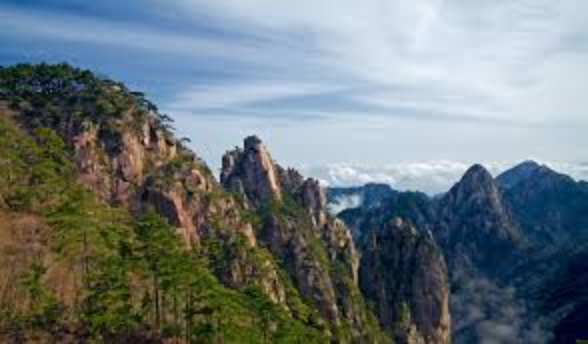
Why Is Huangshan Called "Yellow Mountain"?
Huangshan, literally meaning "Yellow Mountain", is a mountain range in southern Anhui province in eastern China. It is renowned for its magnificent scenery, featuring granite peaks, Huangshan pine trees, and hot springs. While the mountain range captivates visitors with its natural beauty, its name holds a story rooted in Chinese history and mythology.
The Original Name: Mount Yi
During the Qin dynasty (221-206 BC), Huangshan was known as "Yishan" (Mount Yi). The reason for this name is not entirely clear, but it is believed to be related to the Yi people who inhabited the region during that era.
The Imperial Decree and the Legend of the Yellow Emperor
The name "Huangshan" came about centuries later, during the Tang dynasty. In 747 AD, Emperor Xuanzong of Tang issued an imperial decree officially changing the mountain's name from Yishan to Huangshan. This change wasn't arbitrary; it was deeply rooted in a legend associating the mountain with a revered figure in Chinese mythology: Huang Di, the Yellow Emperor.
The Legend of Huang Di and Huangshan
Huang Di, often considered the ancestor of the Han Chinese, is a legendary figure shrouded in mythology. Legends claim that Huang Di achieved immortality through his mastery of alchemy and herbal medicine on Mount Yi. It's said that he and his ministers created a magical elixir, and upon consuming it, ascended to the heavens from the mountain, leaving behind a legacy that would forever link his name to the towering peaks.
| Figure | Description |
|---|---|
| Huang Di (Yellow Emperor) | A legendary Chinese sovereign and cultural hero credited with numerous inventions and achievements, including writing, medicine, and governance. |
Honoring the Yellow Emperor
The name "Huangshan" ("Yellow Mountain"), therefore, is believed to be a tribute to Huang Di, the Yellow Emperor. The "Huang" in both the emperor's name and the mountain's name share the same Chinese character (黄), signifying a direct link intended to honor the legendary figure.
A Name that Echoes through Time
Since the Tang dynasty, the name "Huangshan" has endured. The mountain range, with its breathtaking landscapes, continues to inspire awe and wonder, just as the legend of the Yellow Emperor continues to resonate in Chinese culture. The name "Huangshan" stands as a testament to the intertwining of history, mythology, and natural splendor that defines this iconic Chinese landmark.
FAQs
1. Was Huangshan always called "Yellow Mountain"?
No, the mountain range was originally known as "Yishan" (Mount Yi) during the Qin dynasty. It was renamed "Huangshan" in 747 AD by an imperial decree from Emperor Xuanzong of Tang.
2. Why is the Yellow Emperor significant to Huangshan?
Legend says that Huang Di, the Yellow Emperor, achieved immortality on Mount Yi (now Huangshan). He is said to have ascended to heaven from the mountain after creating an elixir of immortality.
3. What does the "Huang" in Huangshan mean?
"Huang" (黄) translates to "yellow" in English. The name "Huangshan" is believed to honor Huang Di, the Yellow Emperor, connecting the mountain to the emperor's legacy.
note: This return of all, without the author's permission, may not be reproduced